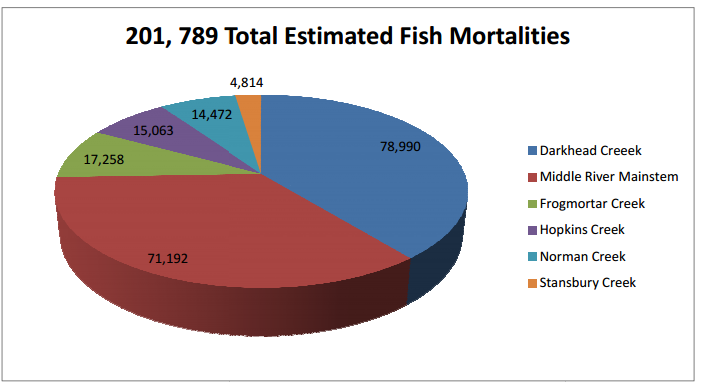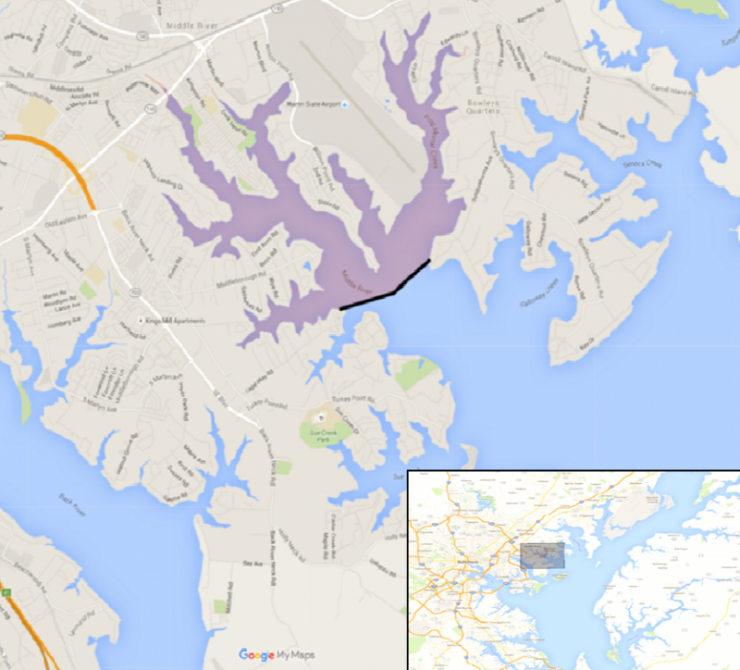On November 9, 2015, the Maryland Department of the Environment (MDE) received reports of dead fish in the Middle River and its tributaries. Within 48 hours an estimated 201,789 fish died. The MDE just recently released its report detailing the findings of their investigation into the Middle River Fish Kill - we have included some of the key points below. To read the full report, click here.

"The fish kill probably began on the evening of Sunday, Nov. 8, 2016, or early morning of Monday the 9th. The cause of the fish kill was concluded to be gill damage and respiratory failure caused by karlotoxin, a fish killing toxin produced by a bloom of the dinoflagellate, Karlodinium veneficum. The effects of the toxin were exacerbated by osmotic stress associated with rising salinity. Since the fish kill involved predominately freshwater species it is likely they formed schools in the headwaters by rising salinity, leaving no escape route from the algal bloom and its associated toxins.
The data collected demonstrates that conditions (salinity over 8ppt and temperature over 60o F) favorable for a widespread bloom of Karlodinium veneficum occurred in Middle River for a finite period. DNR Fisheries data demonstrates that salinity rose in the headwaters of the system from 2-4 parts per thousand (ppt) during July through September, to 8.5 ppt by early November. The increase in salinity was caused by dry weather and low freshwater input into the region, allowing the underlying salt wedge to encroach farther upstream into the system.
At the time when the rising salinity reached 8 ppt, water temperatures were still above 60F and the bloom formed. Excess nutrients are required for algal blooms. We suggest that this bloom was fed by nutrients that came from both the Middle River watershed (in runoff and nutrient recycling from other biomass) and from nutrients carried upstream with the encroaching salt wedge.

Several citizens voiced concerns that runoff or illicit discharges from discrete sources had caused this fish kill. All reports were investigated by the appropriate authorities and, where noncompliance was discovered, the appropriate enforcement response has been taken. No evidence of a discharge that could have caused a fish kill was found. Furthermore, this fish kill took place nearly simultaneously in several remote tributaries. It is impossible for a toxic discharge to travel from one affected location, undiluted, to the other locations without many tidal flows and ebbs over several days.
The fact that live fish were concentrated in, not away from, several extreme headwaters, also exonerates those headwaters as the source of any toxic discharge. The timing of events and geographical remoteness of the affected areas clearly points to environmental conditions endemic to the Middle River system as the source of the stressor(s) that concentrated and killed more than 200,000 fish."
This information was taken from the conclusions section of the "November 2015 Middle River Fish Kill Investigation Report" released on Feb. 2 by the MDE.